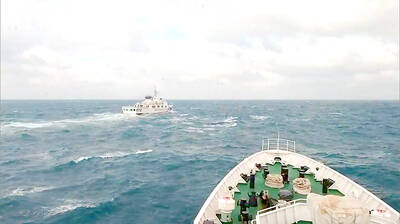A drug-resistant “superbug” has infected three Australians who traveled to India, an expert said yesterday, reinforcing fears it could spread worldwide after hitting dozens of people from Britain.
Peter Collignon, Canberra Hospital’s head of infectious diseases department, said the cases — including one patient who had plastic surgery in Mumbai — were just the “tip of the iceberg.”
“There may well be more because it’s difficult to pick up this particular gene unless you’ve got sophisticated testing,” Collignon said.
India has reacted angrily to a medical study linking Indian hospitals to the superbug, with some politicians claiming a conspiracy against the country’s booming medical tourism industry.
The study, published in the British medical journal Lancet Infectious Diseases, said health tourists flocking to South Asia had carried a new class of antibiotic-resistant superbug to Britain, and warned that it could spread worldwide.
In a strong statement issued late on Thursday, the Indian health ministry criticized the report for scaremongering and took particular exception to the naming of the NDM-1 bacteria — or “New Delhi metallo-lactamase-1.”
The ministry acknowledged that such bacteria might circulate more widely with advances in international travel.
“But to link this with the safety of surgery in hospitals in India and citing isolated examples to show that ... India is not a safe place to visit, is wrong,” the statement said. “We strongly refute the naming of the enzyme ... and also refute that hospitals in India are not safe for treatment including medical tourism.”
Indian doctors warned earlier this year that the country was facing a threat from the superbug — months before the British study.
A team of researchers from the private Hinduja hospital in Mumbai studied 24 infection cases between August and November last year and said they found 22 incidences of the bug.
“This high number in a relatively short span is a worrisome trend that compromises the treatment options with the carbapenems,” they wrote in the Journal of the Association of Physicians of India in March, referring to a type of antibiotic used as drugs of last resort against many multi-drug resistant infections.
The gene was identified last year in bacteria carried by a Swedish patient admitted to hospital in India. The gene, which is found in a number of different bacteria, produces an enzyme that renders even very strong, last resort antibiotics ineffective in combating the bacteria.
Collignon said he treated one of Australia’s three cases in Canberra, while there was one each in the eastern states of New South Wales and Queensland.
“We found this multi-resistant, untreatable bug in their urine, luckily not causing too many problems to that person, but it’s a real problem if it spreads to others,” he said.
“The germ we had was untreatable — there were no drugs we had that could treat it,” he added.
Collignon said his patient caught the bug in intensive care in an Indian hospital after plastic surgery went wrong. However, he said one of the three picked up their bug in the general community, indicating the extent of the problem.
“There are likely to be more because what you’re picking up in hospitals is just the tip of the iceberg,” he said. “It probably is killing lots of people, but it happens in the developing world and there’s no way of measuring it.”
Collignon blamed the new bugs on the “abuse” of antibiotics in medicine and also in agriculture.
The professor, who sits on WHO panels on antibiotics, called for a worldwide crackdown on antibiotics use along with a major hygiene campaign to stop the bugs spreading.
“All of these systems are interlinked through our food. Wherever we use antibiotics and wherever we over-use them we will get superbugs developing and we will get problems,” Collignon said.
“People are dying in large numbers because there’s no antibiotics they can obtain, particularly in developing countries,” he added. “This is getting worse, there are no antibiotics in the pipeline so we have to work with what we’ve got.”
Also See: Eaten alive: a five-year battle with the flesh-eating bacteria necrotizing fasciitis

The Ministry of Foreign Affairs (MOFA) yesterday said it is closely monitoring developments in Venezuela, and would continue to cooperate with democratic allies and work together for regional and global security, stability, and prosperity. The remarks came after the US on Saturday launched a series of airstrikes in Venezuela and kidnapped Venezuelan President Nicolas Maduro, who was later flown to New York along with his wife. The pair face US charges related to drug trafficking and alleged cooperation with gangs designated as terrorist organizations. Maduro has denied the allegations. The ministry said that it is closely monitoring the political and economic situation

Conflict with Taiwan could leave China with “massive economic disruption, catastrophic military losses, significant social unrest, and devastating sanctions,” a US think tank said in a report released on Monday. The German Marshall Fund released a report titled If China Attacks Taiwan: The Consequences for China of “Minor Conflict” and “Major War” Scenarios. The report details the “massive” economic, military, social and international costs to China in the event of a minor conflict or major war with Taiwan, estimating that the Chinese People’s Liberation Army (PLA) could sustain losses of more than half of its active-duty ground forces, including 100,000 troops. Understanding Chinese

UNRELENTING: China attempted cyberattacks on Taiwan’s critical infrastructure 2.63 million times per day last year, up from 1.23 million in 2023, the NSB said China’s cyberarmy has long engaged in cyberattacks against Taiwan’s critical infrastructure, employing diverse and evolving tactics, the National Security Bureau (NSB) said yesterday, adding that cyberattacks on critical energy infrastructure last year increased 10-fold compared with the previous year. The NSB yesterday released a report titled Analysis on China’s Cyber Threats to Taiwan’s Critical Infrastructure in 2025, outlining the number of cyberattacks, major tactics and hacker groups. Taiwan’s national intelligence community identified a large number of cybersecurity incidents last year, the bureau said in a statement. China’s cyberarmy last year launched an average of 2.63 million intrusion attempts per day targeting Taiwan’s critical

‘SLICING METHOD’: In the event of a blockade, the China Coast Guard would intercept Taiwanese ships while its navy would seek to deter foreign intervention China’s military drills around Taiwan this week signaled potential strategies to cut the nation off from energy supplies and foreign military assistance, a US think tank report said. The Chinese People’s Liberation Army (PLA) conducted what it called “Justice Mission 2025” exercises from Monday to Tuesday in five maritime zones and airspace around Taiwan, calling them a warning to “Taiwanese independence” forces. In a report released on Wednesday, the Institute for the Study of War said the exercises effectively simulated blocking shipping routes to major port cities, including Kaohsiung, Keelung and Hualien. Taiwan would be highly vulnerable under such a blockade, because it